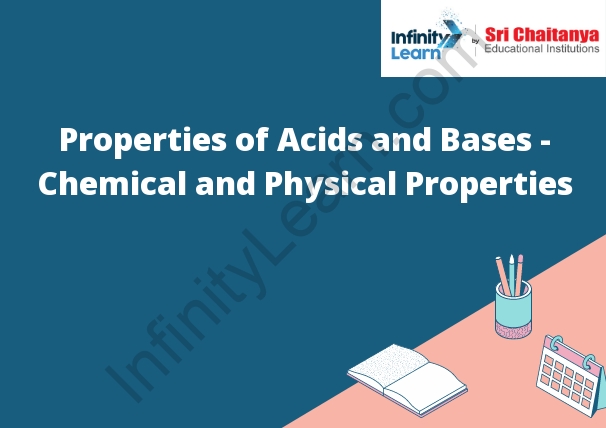Table of Contents
What are acid and base?
An acid is a molecule or ion capable of donating a proton (H+) to another molecule or ion. A base is a molecule or ion capable of accepting a proton from another molecule or ion. Properties of Acids and Bases – Chemical and Physical Properties.

Properties of Base
A base is a substance that can accept a proton (H+) in an aqueous solution. This means that a base can dissolve in water and release a hydroxide ion (OH-). Bases are also electrolytes, which means that they can conduct electricity in solution.
Bases have a pH greater than 7.0 and are often referred to as alkalis. They are soluble in water and can form ionic compounds with acids. Some common bases include sodium hydroxide (NaOH), potassium hydroxide (KOH), and ammonium hydroxide (NH 4 OH).
Physical properties of bases
A base is a substance that can accept protons from acids to form salts. Bases are also electron donors. They are usually ionic compounds, but can also be covalent compounds. The physical properties of bases are very different from the physical properties of acids.
Bases are often solids, although some are liquids. They are usually white or colorless, but can also be colored. They are odorless, but some can have a bitter taste. Bases are soluble in water, but insoluble in most organic solvents.
The melting and boiling points of bases are higher than the melting and boiling points of acids. This is because the negatively charged ions in a base are attracted to each other, and this attraction increases as the temperature increases. This strong attraction between the ions holds the solid together, so the melting point is high. The boiling point is also high because the ions are strongly attracted to each other and are not able to move about as freely as they are in a liquid.
Chemical Properties of Acids:
Acids are chemicals that release hydrogen ions (H+) when dissolved in water. This makes the water acidic, meaning that it has a lower pH than pure water. The lower pH means that the water is more corrosive and can dissolve materials like metal.
Acids also have a sour taste and can be used to dissolve food in order to make a sauce or marinade. Examples of acids include vinegar, lemon juice, and tomato sauce.
Properties of Bases
Some common properties of bases include:
1. They taste bitter.
2. They react with acids to form salts.
3. They are soluble in water.
4. They are alkaline in nature.
Physical properties of bases
The physical properties of bases include their ability to dissolve in water and to form alkaline solutions. Bases also have a bitter taste, a slippery feel, and a caustic effect on the skin.
Chemical properties of Bases
A base is a proton acceptor. Bases are ionic compounds that dissolve in water to give hydroxide ions (OH-). The hydroxide ions react with acids to form salts and water. Bases are also called alkalis.
The pH of a base is greater than 7.





